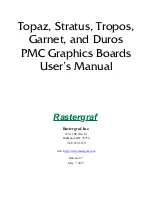
The transfer starts with the sixteen descriptor bytes, followed immediately by the payload bytes.
The signal
m_axis_cq_tvalid
remains asserted over the duration of the packet. The user logic
can prolong a beat at any time by pulling down
m_axis_cq_tready
. The AXI4-Stream
interface signals m_axis_cq_tkeep (one bit per Dword position) indicate the valid Dwords in the
packet including the descriptor and any null bytes inserted between the descriptor and the
payload. That is, the
m_axis_cq_tkeep
bits are set to 1 contiguously from the first Dword of
the descriptor until the last Dword of the payload. During the transfer of a packet, the tkeep bits
can be 0 only in the last beat of the packet, when the packet does not fill the entire width of the
interface. The signal
m_axis_cq_tlast
is always asserted in the last beat of the packet.
The completer request interface also includes the First Byte Enable and the Last Enable bits in
the
m_axis_cq_tuser
bus. These are activated in the first beat of the packet, and provides
information of the valid bytes in the first and last Dwords of the payload.
The
m_axi_cq_tuser
bus also provides several optional signals that can be used to simplify
the logic associated with the user side of the interface, or to support additional features. The
signal
is_sop
is asserted in the first beat of every packet, when its descriptor is on the bus.
When the straddle option is not in use, none of the other sop and eop indications within
m_axi_cq_tuser
are relevant to the transfer of Requests. The byte enable outputs
byte_en[127:0]
(one per byte lane) indicate the valid bytes in the payload. These signals are
asserted only when a valid payload byte is in the corresponding lane (it is not asserted for
descriptor or null bytes). The asserted byte enable bits are always contiguous from the start of
the payload, except when payload size is two Dwords or less. For writes of two Dwords or less,
the 1s on
byte_en
are not be contiguous.
Chapter 4: Designing with the Core
PG346 (v3.3) November 16, 2022
CPM Mode for PCI Express
134
















































